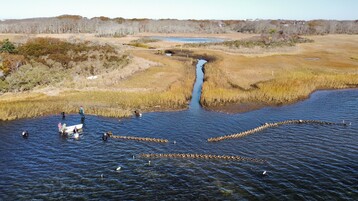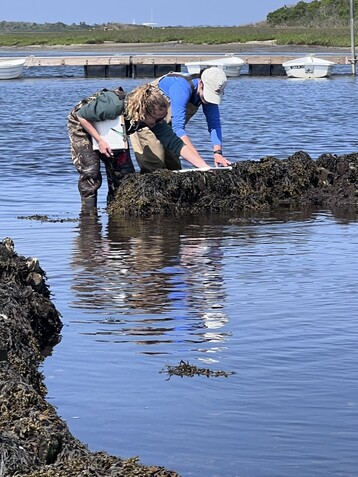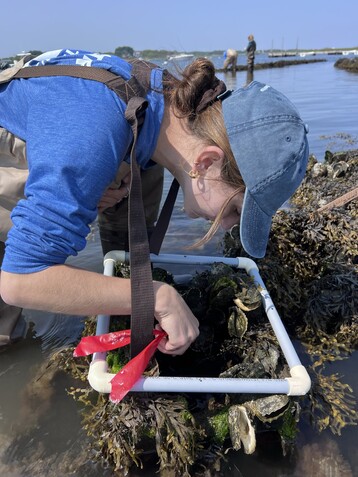Nantucket's Artificial Intertidal Oyster Reef Showing Promising Results
JohnCarl McGrady •

Four years after the Nantucket Conservation Foundation (NCF) built the first artificial intertidal oyster reef in Massachusetts, the project continues to be a success, reducing erosion and mitigating the effects of sea level rise along a portion of Popis Harbor.
Built in November of 2021, the oyster reef, located near Medouie Creek, has allowed the shoreline to trap more sediment and build up elevation, NCF stated, potentially allowing the endangered salt marsh habitat behind the reef to expand.
The oysters in the reef are also thriving. As oysters are filter feeders, removing many harmful substances from the water column, this should, in theory, improve water quality in the area.

“The Medouie Creek oyster reef is an example of how nature-based solutions can support coastal resilience in real, measurable ways,” said Cormac Collier, NCF President & CEO. “As the first project of its kind in Massachusetts, it’s encouraging to see it already reducing erosion, supporting marsh growth, and improving water quality. This work reflects NCF’s commitment to applying innovative, science-based strategies to protect Nantucket’s natural resources. We’re proud to be leading efforts like this and look forward to building on its success in other parts of the island.”
NCF is pursuing coastal resilience projects at several sites in the Coskate-Coatue region that will likely incorporate further oyster reefs.
“The beneficial results documented over the past four years by this data are extremely important as proof of concept,” NCF wrote in a press release. “Four years after installation, the reef has resulted in many positive ecological and coastal resilience benefits.”
Installed in partnership with the town’s shellfish hatchery, the Polpis Harbor oyster reef is one of many efforts local conservation organizations are taking to combat sea level rise, which continues to worsen as climate change accelerates. Just last month, NCF announced that it would be moving its Coatue ranger shack further inland to insulate it from erosion.
